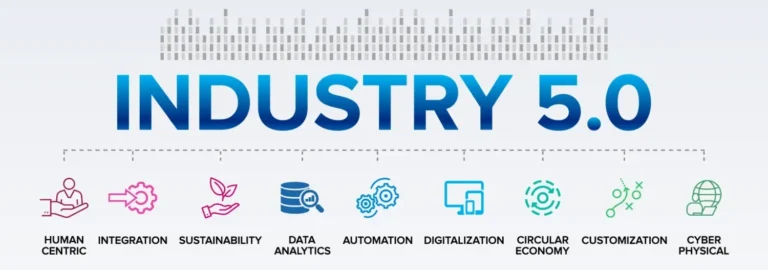The Future of Cloud and Infrastructure
Cloud technology has become an integral part of modern businesses, revolutionizing the way organizations store, manage, and access data. As this technology continues to evolve at a rapid pace, it is crucial for businesses to stay abreast of the latest trends and advancements in cloud and infrastructure.
Let’s navigate through the intricacies of cloud technology and uncover the transformative potential it holds for businesses of all sizes.
Emerging Trends in Cloud Technology
Cloud technology is constantly evolving, and keeping up with emerging trends is crucial for businesses. One of the prominent trends in cloud technology is the adoption of multi-cloud strategies. Organizations are increasingly using multiple cloud platforms to avoid vendor lock-in and take advantage of the unique features offered by different providers.
Another emerging trend is the rise of serverless computing. With serverless architectures, developers can focus on writing code without having to manage the underlying infrastructure. This trend is enabling faster development cycles and greater scalability.
Additionally, hybrid cloud solutions are gaining popularity as they combine the benefits of public and private clouds. This allows organizations to leverage the flexibility and cost-effectiveness of the public cloud while maintaining control over sensitive data in a private cloud environment.
These are just a few examples of the emerging trends in cloud technology. As technology continues to evolve, businesses need to stay informed and adapt their infrastructure accordingly.
Impact of Artificial Intelligence on Infrastructure Management
Artificial Intelligence (AI) is revolutionizing infrastructure management. AI-powered tools and algorithms are being used to optimize resource allocation, automate routine tasks, and improve system performance.
One of the key impacts of AI on infrastructure management is predictive analytics. By analyzing historical data and identifying patterns, AI algorithms can predict potential issues before they occur. This proactive approach helps organizations prevent downtime, minimize disruptions, and optimize resource utilization.
AI is also enabling intelligent automation in infrastructure management. With machine learning algorithms, systems can learn from past incidents and automatically respond to similar situations in the future. This reduces the need for manual intervention and improves overall efficiency.
Furthermore, AI-powered security solutions are enhancing infrastructure protection. AI algorithms can detect anomalies, identify potential threats, and respond in real-time to mitigate risks. This is particularly important in cloud environments where security is a top concern.
Overall, the impact of AI on infrastructure management is significant. By harnessing the power of AI, organizations can improve operational efficiency, enhance security, and deliver better user experiences.
Challenges in Cloud Security
While cloud technology offers numerous benefits, it also presents unique security challenges. One of the main challenges is data breaches. With sensitive data stored in the cloud, organizations need to ensure robust security measures to prevent unauthorized access.
Another challenge is the shared responsibility model. In a cloud environment, the responsibility for security is shared between the cloud service provider and the customer. It is important for organizations to clearly understand their roles and responsibilities to ensure adequate security measures are in place.
Additionally, compliance and regulatory requirements pose challenges in cloud security. Different industries have specific regulations regarding data privacy and security. Organizations need to ensure their cloud infrastructure meets these requirements to avoid penalties and legal issues.
Furthermore, the dynamic nature of cloud environments introduces complexity in security management. With constantly changing resources and configurations, organizations need robust monitoring and access control mechanisms to detect and respond to security threats.
Addressing these challenges requires a comprehensive approach to cloud security. Organizations must implement strong authentication mechanisms, encryption protocols, and regular security audits to protect their infrastructure and data.
Advancements in Edge Computing
Edge computing is a paradigm that brings computation and data storage closer to the source of data generation. This approach offers several advantages, especially in scenarios where low latency and real-time processing are critical.
One of the key advancements in edge computing is the proliferation of edge devices. These devices, such as IoT sensors and smart appliances, generate a massive amount of data at the edge of the network. By processing and analyzing this data locally, organizations can reduce the amount of data that needs to be transferred to the cloud, resulting in lower latency and improved efficiency.
Another advancement is the integration of edge computing with artificial intelligence. Edge devices can leverage AI algorithms to perform real-time analytics and make intelligent decisions at the edge. This is particularly useful in applications that require immediate responses, such as autonomous vehicles and industrial automation.
Additionally, edge computing enables edge-to-cloud collaboration. By combining the processing power of edge devices with the scalability of the cloud, organizations can create powerful and flexible computing architectures. This allows for distributed processing, load balancing, and efficient resource utilization.
Overall, advancements in edge computing are revolutionizing the way data is processed, analyzed, and acted upon. This technology has the potential to drive innovation across various industries and enable new use cases that were previously not feasible.
Sustainable Practices in Data Centers
Data centers are a critical component of cloud infrastructure, and adopting sustainable practices in their design and operation is essential for minimizing environmental impact.
One of the key practices is improving energy efficiency. Data centers consume a significant amount of energy, and optimizing their energy usage can result in substantial cost savings and a reduced carbon footprint. This can be achieved through measures such as using energy-efficient hardware, implementing intelligent cooling systems, and adopting renewable energy sources.
Another sustainable practice is waste management. Data centers generate a considerable amount of electronic waste, including outdated equipment and components. Proper disposal and recycling of these materials are important to minimize environmental pollution and promote circular economy principles.
Furthermore, adopting green building principles in data center design can contribute to sustainability. This includes utilizing energy-efficient materials, incorporating natural ventilation and lighting, and implementing efficient water management systems.
In addition to these practices, data centers can also explore innovative solutions such as liquid cooling and modular designs to further improve sustainability.
By embracing sustainable practices, data centers can not only reduce their environmental impact but also demonstrate corporate social responsibility and attract environmentally conscious customers.
The landscape of cloud technology and infrastructure is constantly evolving, presenting businesses with both opportunities and challenges. As we navigate through the complexities of cloud technology, it becomes evident that staying informed and adapting to emerging trends is crucial for organizations of all sizes.
By embracing these trends, challenges, and opportunities, businesses can harness the transformative power of cloud technology to drive innovation, efficiency, and sustainability.







